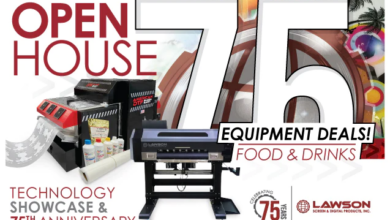
When it comes to heat printing and sublimation printing applications, the overall two-step process is essentially the same in both styles. Your first step is printing your custom design out onto your designated paper. The next step is heat pressing the design onto your substrate of choice.
The primary difference between the two applications is that only the ink transfers with sublimation, while with heat transfer papers there is usually a transfer layer that is also transferred over as well. This is true of most paper types. Depending on the types of garments and substrates one is looking to decorate, one application may be more beneficial to the decorator than the other.
Let’s look at some pros and cons associated with both sublimation and heat printing:
Sublimation
Pros:
- Transfers are truly self-weeding
- Durability is unmatched
- Ability to utilize the same transfer papers on both textiles and hard surfaces
- Produces incredibly vibrant colors on both hard and soft substrates
- Low investment costs
- Design has no hand feel
Cons:
- Application is restricted to polyester fabric and poly-coated substrates
- Application is limited to the color of the substrate
- Pro tip: For best colors and vibrancy, always use white
- Sublimation ink clogs up incredibly quickly
- Pro tip: Run your printer every day to properly maintain your sublimation system
Heat Printing
Pros:
- Affords the ability to go two different routes with printing (laser or inkjet)
- Ability to decorate both cotton and polyester substrates
- No restrictions on the color of the garment
- Low investment costs
- Ability to achieve self-weeding with laser heat transfer paper
- Laser printers don’t clog, as they use toner not ink
Cons:
- Most heat transfer papers utilized for light garments have a transfer layer that ultimately transfers with your design leaving a translucent background
- Inkjet papers are not self-weeding
- Inkjet papers are limited to textiles only
- Laser papers require a different paper type for transferring onto textiles than papers used to transfer onto hard surfaces
- Bigger designs are more susceptible to cracking
- Heavier hand feel with bigger designs (wearer will be able to feel the artwork on the garment)




